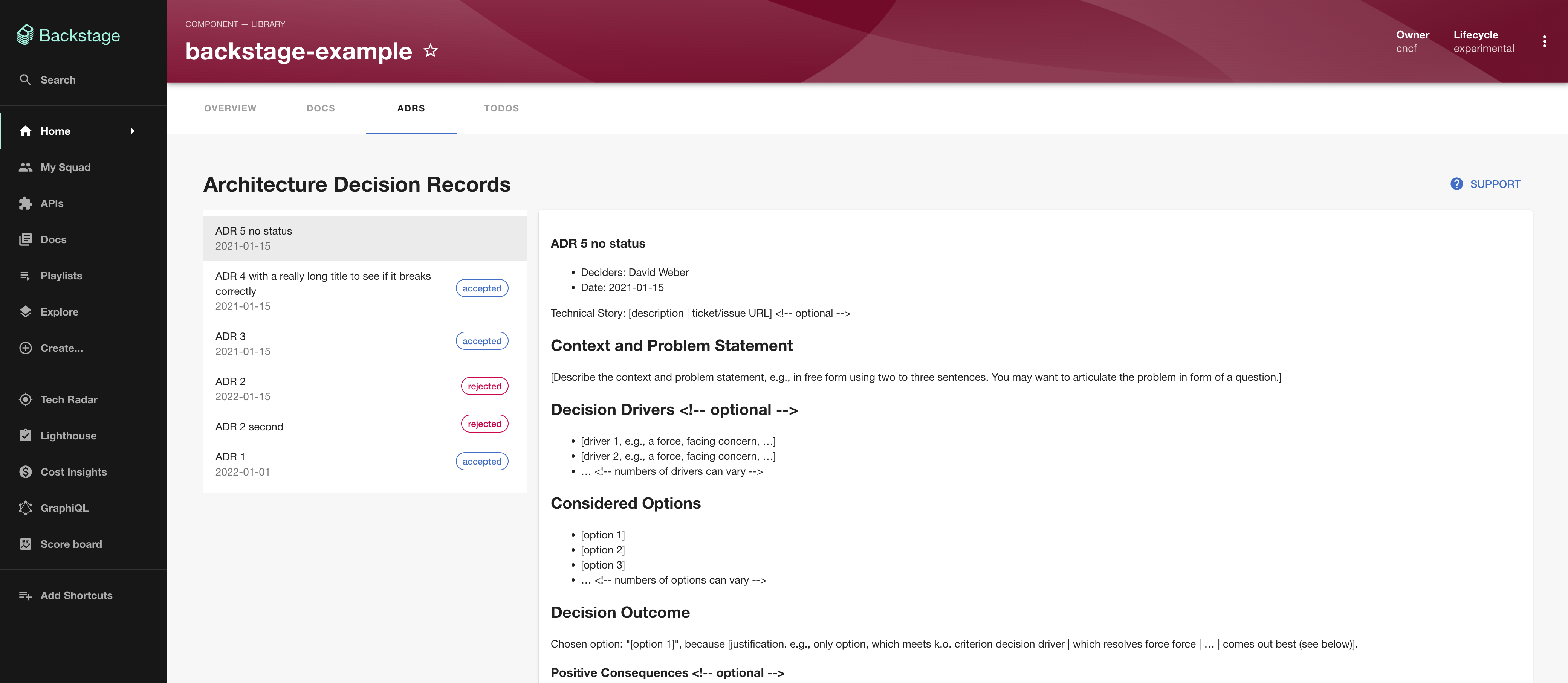Configuring Architecture Decision Records (ADR)
Published on July 25th, 2025Introduction
The Architecture Decision Records (ADR) plugin allows you to explore ADRs associated with your entities, as well as discover ADRs across other entities using the Search. Use this to inform your own architectural decisions based on the experiences of previous projects.
This plugin helps teams share architectural decisions that have been documented using MADR templates . Using MADR with Roadie makes it easier to understand the reasoning behind technical choices and learn from past decisions across different projects.
ADR Entity Configuration
Step 1: Add the ADR Tab
The ADR plugin is available as a tab on entity pages in Roadie.

Step 2: Annotate your entities
Add the following annotation to entities to link ADR files to the entity:
metadata:
annotations:
backstage.io/adr-location: [RELATIVE_PATH_TO_ADR_CATALOG_INFO_FILES_DIR]
The value for backstage.io/adr-location should be a path relative to your catalog-info.yaml file or an absolute URL to the directory which contains your ADR markdown files.
For example, if you have the following MADR directory structure, you would set backstage.io/adr-location: docs/adrs:
repo-root/
README.md
src/
catalog-info.yaml
docs/
adrs/
0001-use-adrs.md
0002-use-cloud.md
Troubleshooting
ADRs not appearing
- Verify that the
backstage.io/adr-locationannotation is correctly set on your entity - Ensure the
backstage.io/adr-locationannotation refers to an ADR directory path that is correct relative to yourcatalog-info.yamlfile